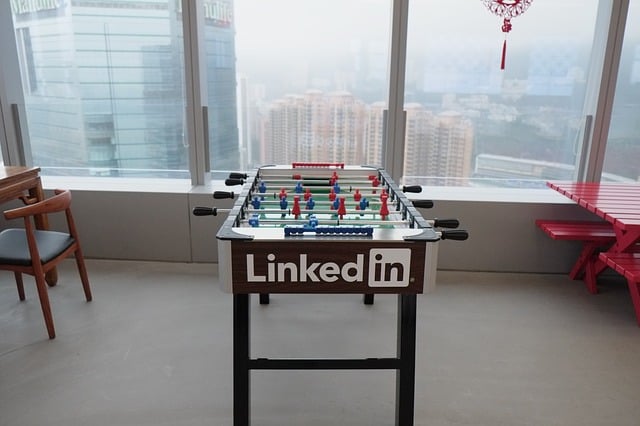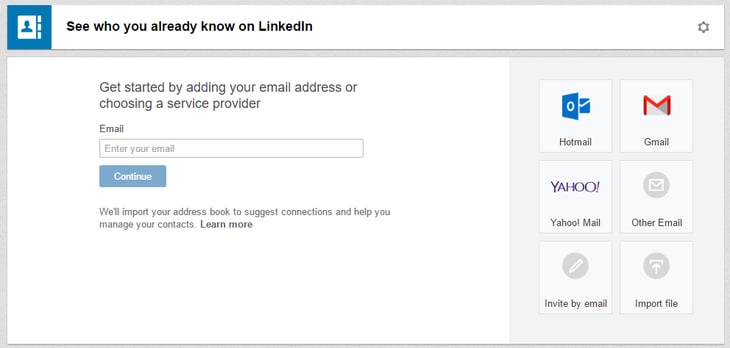How LinkedIn Connections Work And How You Can Utilise Them For Your Business Marketing

LinkedIn is the world’s largest business networking and marketing association, having 450 million members in June 2016. Therefore, as a B2B marketing tool, the strength of the platform lies in the connections you make, and how you leverage these relationships to grow your business. It is easy enough to get connections on LinkedIn, but in order to use them to their maximum advantage it is helpful to understand how connections work, and what you should and shouldn’t do with them.
How LinkedIn Connections Work
Physically getting connections on LinkedIn is simple. You can start off by looking up a business associate, colleague or client by name in the search box. You then click on a ‘connect’ button to start the connection request process. LinkedIn creates a generic email message which is then sent to your contact, which you can personalise if you wish. We strongly recommend you do so, as it sets a productive, personal tone to your relationship, and makes it more likely they will accept your invite. Before sending someone an invitation to connect, you will be prompted to indicate how you know them e.g. whether they are a friend, a customer, business partner etc. If how you know them is listed on LinkedIn, for instance if they work for a customer company that has a page on the platform, you’ll be able to select this through a drop-down menu.
Once you’ve filled out the details and customised your message, you can click send and your invitation is emailed to your contact. Hopefully they will accept your invitation, and the next time you login to LinkedIn they’ll be listed as one of your connections.
Expanding Your Network Of Connections
This is where it gets interesting. After you look up one person, LinkedIn will suggest other names based on association. So, if you look up a company’s Sales Director, LinkedIn may also suggest you view the profile of its CEO. This is about as far as many people get with LinkedIn: they will quickly build up a ‘network’ of connections based on their friends, colleagues and acquaintances – along with a few chancers (usually salespeople who have sent them unsolicited connection requests). Unfortunately, LinkedIn facilitates this random network building strategy by suggesting connections based on your email contact list. These contacts invariably include family members and other people with whom you have no meaningful business relationship.
It goes without saying that such a network of connections is almost useless for business marketing purposes. To build a list of useful connections, you will want to connect with potential customers and influential people within your industry. This will involve people that you don’t know personally, and maybe have never even shared an email with.

Reaching People You Don’t Know
So why would you send an unsolicited connection request to someone you don’t know? Isn’t this as bad as spam or cold calling? The answer is that while you technically can send these people connection requests, you don’t have to. This is because LinkedIn’s connection algorithm works on the basis of webs of association. You may not personally know the Managing Director of a company you are trying to build a relationship with, but you may know someone who knows someone who does!
In this case, the elusive MD will be listed by LinkedIn as a ‘third level connection’. LinkedIn will suggest one of your current connections – for instance, a director in a mutual supplier company – who may be able to introduce you to someone else who knows your target MD. Sound complicated? Not really. To seek an introduction, LinkedIn provides a handy link that generates a message to your contact requesting they provide a name who can make the introduction. This will be a ‘first level’ contact of the person you are trying to link with. The message even contains a URL to the target prospect’s profile. If your connection is amenable and can provide a name, you can then approach them in turn and get a direct introduction to the person you’re trying to connect with.
You may be surprised just how many people turn out to be second or third level connections – including many influential people within your industry.
How To Use Your Connections To Grow Your Business
This is one of the core ways of using your connections to grow your business. As your own network expands, the closer you will get to building relationships with important business contacts. Another way of doing this is by joining LinkedIn groups. Engaging in these groups will give you access to valuable contacts and will allow you to take part in direct conversations with influencers in your market. These conversations frequently lead to LinkedIn connections and grow into business opportunities.
Once you have got connections on LinkedIn, you can start cultivating a business relationship. If you included a personal message on your connection invite, then you will already have taken the first and most important step towards this. Good start, but now you need to build on it. Fortunately, LinkedIn makes this easy by showing you all the things that you have in common with your new contact. For instance, it will show you if you have any work-related skills in common with your contact, if you share any interests or even if you speak the same languages. It will also indicate if you are common members of the same groups, or have any connections in common
Be Active
Like other social media platforms, you get out what you put in to LinkedIn. You may have hundreds of connections on LinkedIn, but unless you are actively involved with the platform, they are not going to do you much good. So keep your profile visible by getting involved with groups, maintaining an accurate company page, posting valuable content and sending personalised offers of help to your contacts. It is worth taking some time to read the content posted by your important connections and to keep yourself visible by updating your profile status several times a week. By doing this you can tap into a very lucrative source of free business marketing for your company.
Find Out More
If you would like more information about how to use LinkedIn to generate more leads and opportunities for your business, please take a look through the section of our Digital Prosperity Blog dedicated to social media marketing.


